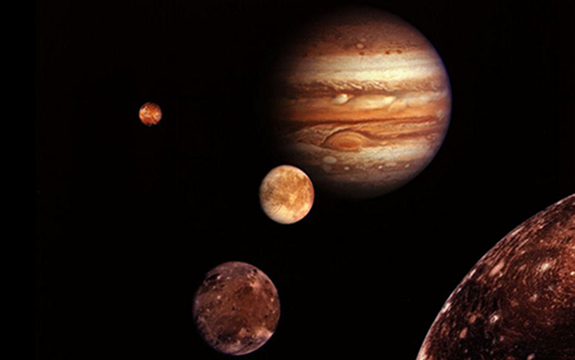Jupiter to outshine all other objects in the night sky

In Summary
Tuesday, 8 March, will see Jupiter at its closest point to Earth, and fully illuminated by the Sun – making this the best time to view the largest planet in the solar system.
On Tuesday, 8 March, Jupiter will be at its closest point to Earth, and fully illuminated by the Sun – making this the best time to view the largest planet in the solar system.
This yearly occurrence is known as Opposition – when the Earth lies directly between Jupiter and the Sun. This means that Jupiter appears directly opposite the Sun on the sky – rising in the East as the Sun sets in the West.
For those in the Southern Hemisphere, the planet will trace across the sky towards the North and eventually set in the West. While for those in the Northern Hemisphere, the planet will trace across towards the South and eventually set in the West.
Swinburne University of Technology astronomer, Dr Alan Duffy, says this will be the best time of the year to see Jupiter. The gas giant will be easily visible after sunset to anyone in the world, without requiring a telescope or binoculars.
He recommends waiting at least one and a half hours after sunset to look for Jupiter so the sunset has fully faded.
“Jupiter is particularly beautiful on 8 March as the gas giant is both at its closest point to Earth as well as fully illuminated by the Sun from our point of view,” Dr Duffy says.
“These effects together mean Jupiter will be easily the brightest object in the night sky after Venus sets along with the Sun, so the ‘King of the Planets’ should be easy to see rising on the opposite side of the sky from the setting Sun.
“If you have access to good binoculars you can even see the four Galilean moons, visible as a string of bright pearls from Jupiter, and they will also be even easier to see than usual.
“If you can, get out to your local astronomical society and with even a modest telescope you can see the Great Red Spot of Jupiter as well as the bands of clouds in this gas giant.”
Dr Duffy says the best time to view is at midnight when the planet is as high in the night sky as it will reach meaning we are looking at it through the least amount of atmosphere.
“As anyone who has seen the air shimmering above asphalt on a hot day, moving air can smear out your view and this is the reason that the stars twinkle. So the less air you have to look through to see the object the better the image, which is why midnight is better than right after sunset when Jupiter is only just peering over the horizon,” Dr Duffy says.
“While Opposition is an annual occurrence, 2016 will be better than last year’s event. Jupiter won’t be competing with the Moon in March as it’s a New Moon which will give off little extra light in the night sky.”

